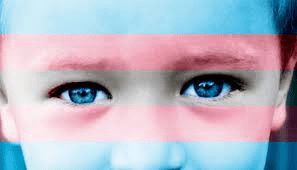What is gender dysphoria in children?
Gender dysphoria arises from discomfort between assigned birth gender and the affirmed gender a person identifies with. Additionally, children experiencing this distress often feel trapped in bodies that do not reflect their true gender identity. Consequently, such intense suffering may contribute to anxiety, depression, self-injury, and heightened suicide risk in vulnerable children. Ultimately, lacking supportive families or loved ones can significantly worsen emotional struggles and intensify the challenges faced by these children.
Recognising Early Signs of Gender Dysphoria in Children
According to research, children with gender dysphoria experience disconnect between assumed gender and the gender they truly identify with. Additionally, some children clearly express identity through strong preferences for clothing, toys, and activities aligned with their affirmed gender. Consequently, these behaviours reflect consistent and genuine expressions of self rather than temporary or experimental childhood phases. Furthermore, children may openly state they are another gender or anticipate growing into their identified gender. Ultimately, recognising these signs early allows families to provide support, understanding, and affirmation during crucial developmental stages.
Understanding How Gender Dysphoria Can Emerge During Adolescence
Some children remain gender neutral, showing no preference for gender-specific roles or activities during early development. Additionally, once adolescence begins, they may strongly dislike their anatomy and desire sex characteristics aligned with their experienced gender. Consequently, this sudden shift in expression can often come as an overwhelming surprise to parents observing their child’s development. Furthermore, it becomes gender dysphoria only when such feelings cause distress or impair functioning across important life domains. Ultimately, recognising these signs early enables parents and professionals to provide appropriate support and understanding during a child’s journey.
Gender Affirmation in the Diagnosis & Support of Gender Dysphoria
Moreover, young people experiencing six months of distress related to assigned gender may meet diagnostic criteria for gender dysphoria. Additionally, diagnosis requires incongruence between assigned and affirmed gender, alongside a desire to be recognised as another gender. Consequently, the individual must also experience significant distress impairing their ability to function at school, home, or social environments. Ultimately, doctors carefully rule out intersex or sexual development conditions before confirming a diagnosis of gender dysphoria.
Gender Affirmation & Supporting Adolescents Struggling with Identity & Mental Health
On the other hand, adolescents experiencing gender identity distress face increased risks of anxiety, depression, substance abuse, and even suicide when unsupported. Additionally, bullying or social exclusion can greatly intensify emotional struggles, leaving vulnerable teens feeling isolated and hopeless in daily life. Consequently, research highlights alarming statistics showing transgender males report suicide attempts exceeding fifty percent within studied groups of adolescents. Similarly, transgender females face significantly elevated risks, with nearly thirty percent admitting to having attempted suicide previously. Ultimately, these findings emphasise the urgent need for compassionate support, early intervention, and inclusive environments protecting adolescent mental health.
Final Thoughts
Therefore, taking gender dysphoria seriously demonstrates unconditional love and ensures children feel respected, valued, and supported in every situation. Additionally, acknowledging their feelings helps protect them from fear of rejection and builds lasting trust within family relationships. Consequently, offering guidance and compassion allows children to explore identity safely while feeling secure in parental acceptance. Ultimately, creating a supportive environment strengthens resilience and encourages children to grow with confidence and authenticity throughout their journey.
Gender Affirmation: Written by Mel McElhatton
Mel McElhatton holds a degree in Social Work from the University of Malta. With Willingness, Mel does life coaching and is one of the facilitators in the IRL – In Real Life team. They are also the producer of the radio show Niddiskutu s-Sess. They can be contacted on mel@willingness.com.mt or call us on 79291817.
References
Olson, K. R., Durwood, L., DeMeules, M., & McLaughlin, K. A. (2016). Mental health of transgender children who are supported in their identities. Pediatrics, 137(3), e20153223.
Mallon, G. P., & DeCrescenzo, T. (2006). Transgender children and youth: a child welfare practice perspective. Child welfare, 85(2).







